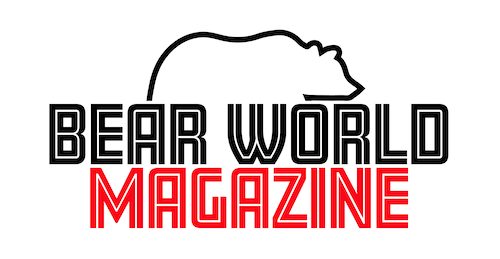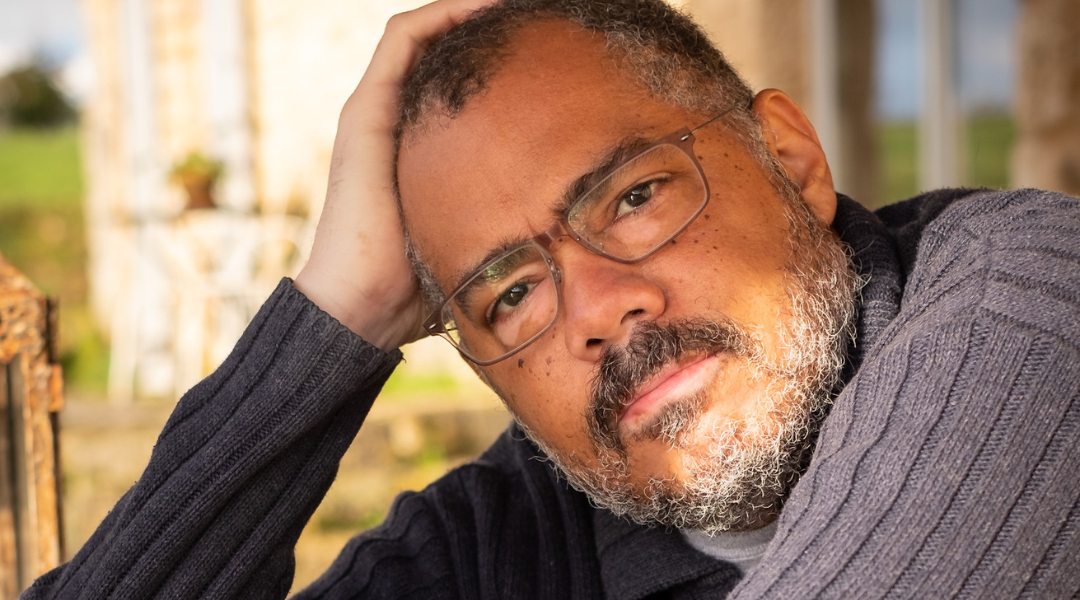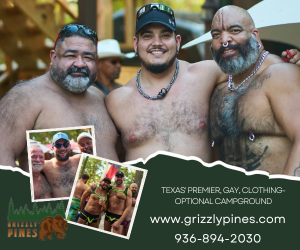Exploring the MASCULAR Gaze with Vincent Keith
Vincent Keith is the visionary artist behind both MASCULAR Studio and MASCULAR Magazine.
Now in its eleventh year, MASCULAR Magazine is a free quarterly publication celebrating masculine imagery, in all its glory, as examined through the lens of predetermined themes by an international array of photographers and artists. Since its inception it has been a platform for both established and amateur artists to get their work out into the world and thankfully, it shows no signs of slowing down. It is a massive undertaking which Vincent happily takes on as the magazine’s editor in chief, just for the love of the work and the artform.
MASCULAR Studio, on the other hand, predates the magazine and is a site devoted exclusively to the breathtaking photography of Vincent Keith himself. It features an astonishing collection of images in which you can see how Vincent has developed his skill and artistic eye through the years. Visitors to the site are free to review his massive body of work and the gorgeous men he’s photographed in solo scenarios or as couples, in the studio or out in the wild, wearing nothing but a shirt or naked in bed. The site also features a set of collaboration photos which were shot by the models themselves, under Vincent’s direction, and then edited by his masterful hand.
We caught up with Vincent at his home near Bordeaux, France, to discuss MASCULAR in all its iterations and his journey as a gay man and artist. We also present to you a selection of Vincent’s photography throughout the piece which showcases his incredible eye and fantastic range. The images are unfortunately edited where necessary but links to his unedited work are included below.
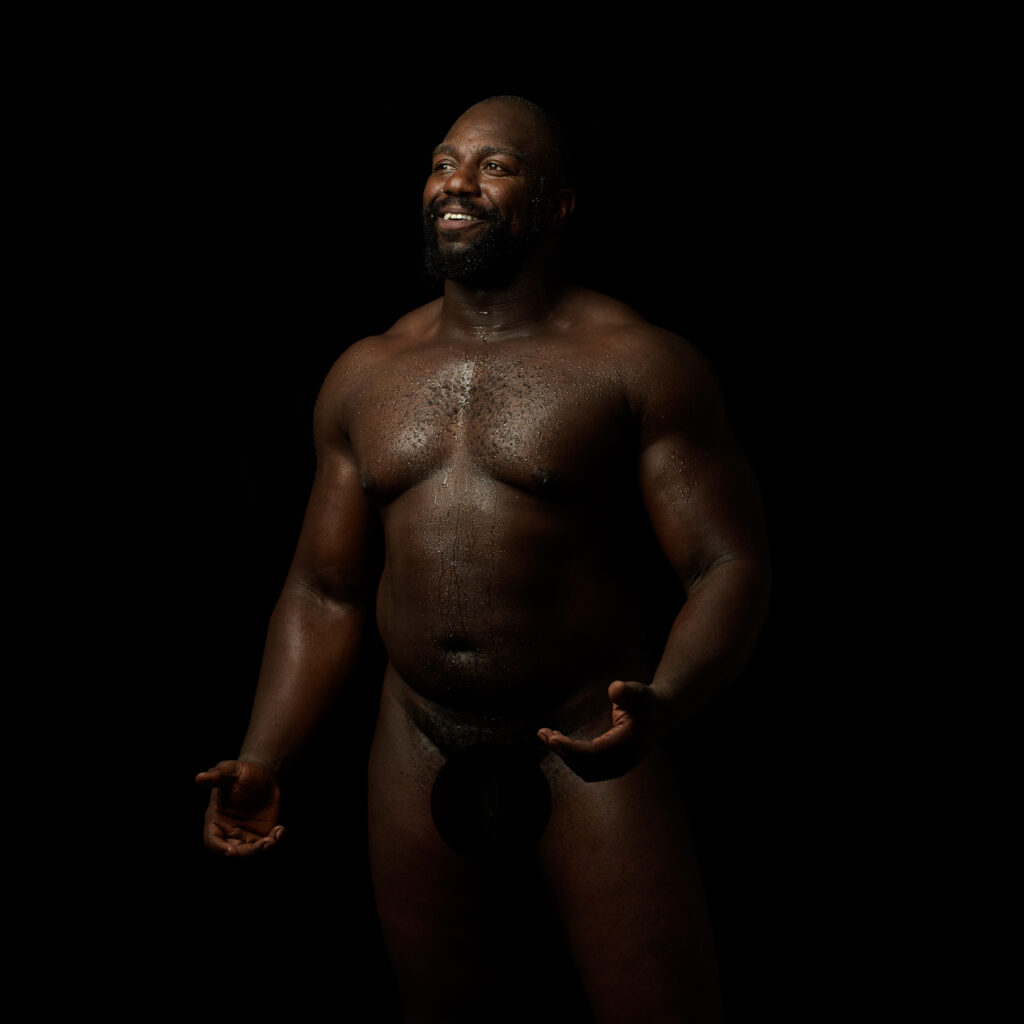

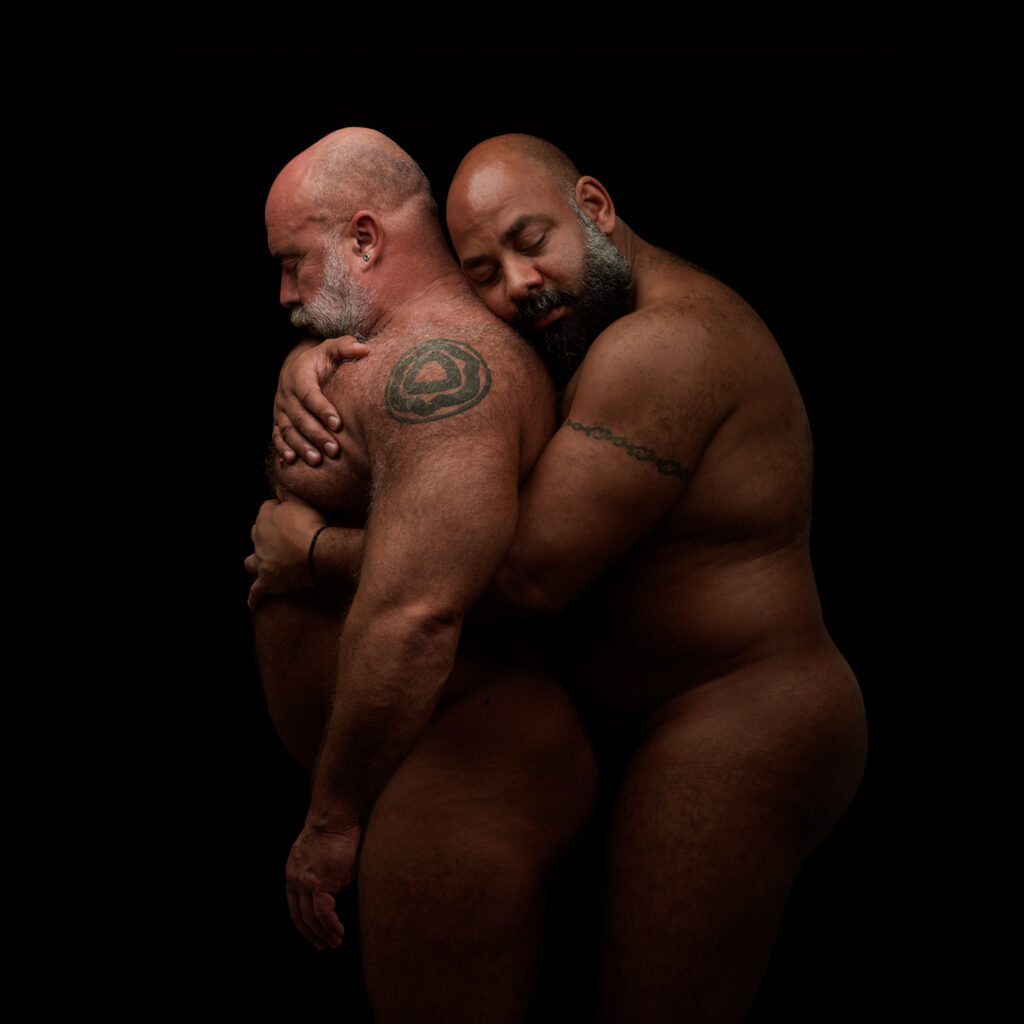
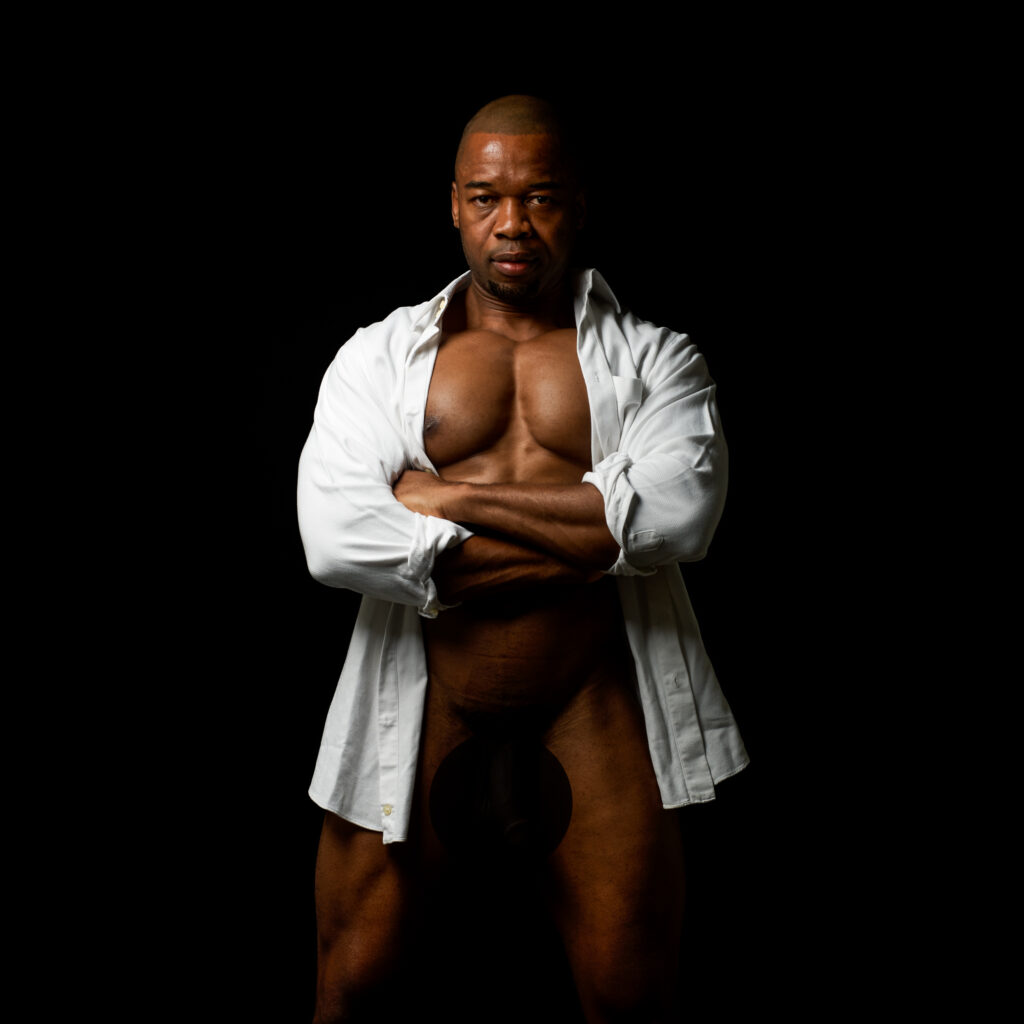

John Hernandez: Hello Vincent! Thanks so much for taking the time to chat with me. We are big fans of your work over at Bear World Magazine. Can you tell me about how and why you launched MASCULAR Studios?
Vincent Keith: Yes of course! So, I used to be married to a woman. I’ve got two children, and as I was growing up, I always knew I had an attraction to men. But I didn’t really have a sense of a gay identity, and that was largely because I didn’t live in any places where I got much exposure to gay culture. My parents are American, but I was born in Beirut and grew up all over the Middle East and Brazil. I didn’t move to the UK until 1992.
And so, all the gay iconography and all the gay imagery I did see was of men that weren’t exactly my type. Then one day, I read an article about bears and I thought, ‘Oh my God, that is exactly me. That’s exactly what I’m interested in’. And as I was coming out, I saw that there wasn’t a lot of art or imagery around hairy men or big men. You had to be sort of a Calvin Klein model to be considered attractive. So, since I’m the kind of a person who takes initiative, I decided I’d just take those pictures myself. I started reaching out to people and after explaining to some of them that it wasn’t a come on for sex (laughs), it took off! And because I didn’t have a bigger agenda than creating the imagery I wanted to see and since it wasn’t about making money, it steadily grew to what it is today.
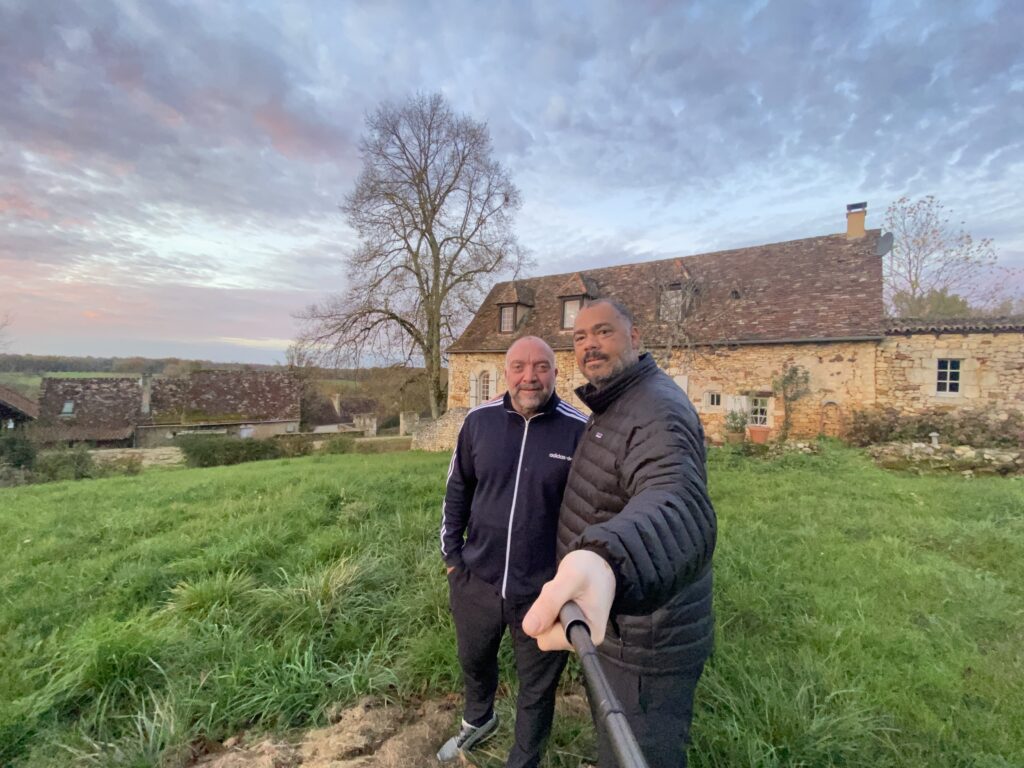
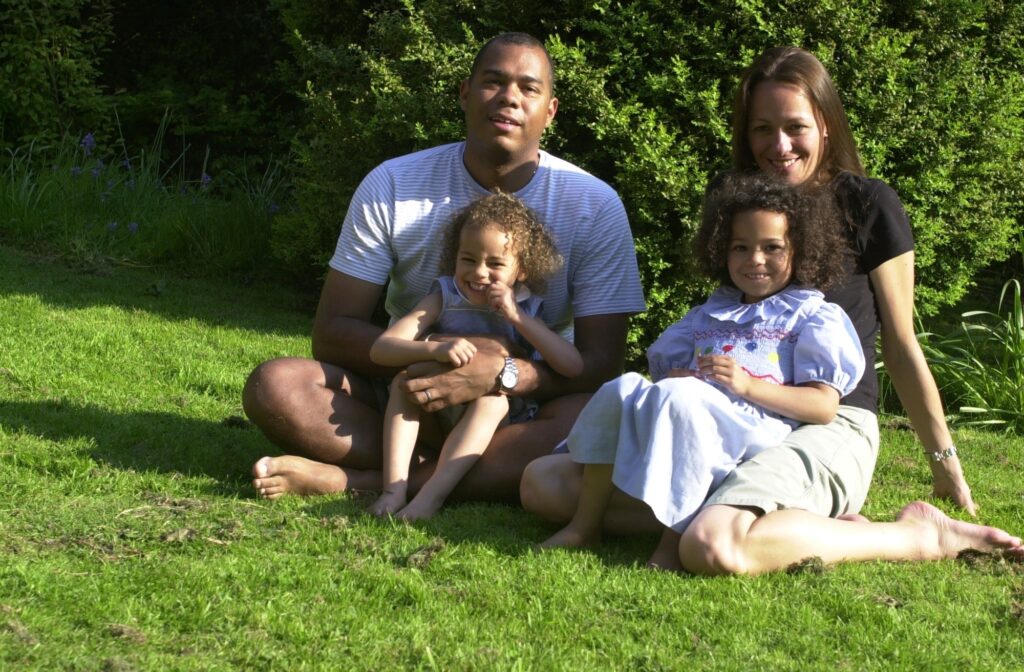

John Hernandez: That’s amazing! And seeing the breadth of work both on the site and in the magazine, I’m stunned to learn that this is not your full-time job, but a passion project. How did MASCULAR make the leap from photo studio to a quarterly digital publication?
Vincent Keith: What happened with the magazine was that I had been using Adobe InDesign in some of my work presentations at the time and realized that it was pretty easy to put together something that looked nice and clean. And again, I wasn’t seeing magazines that had the content that I wanted to see and you guys didn’t exist at the time. So, I said ‘Well why not?’ I reached out to a few friends and asked if they would submit some articles and photos and they did!
The first edition was great fun to make. I’ve always felt that, you know, there are too many people like you and me who are so busy with work and focused on life that we leave the camera, or the easel, or the pens in the closet because we just don’t have time for it. But I think we are better, more well-rounded people if we are able to express the different sides of our character. There’s a creative side that needs to be addressed. People feel better when they write, draw or take photos, and the magazine helps encourage that creativity and give visibility to the work of people like you and me.
We’re currently working on our 37th issue and we’ve had contributors from all over the world. Being the son of a diplomat, I’m always interested in how people from different cultures interact and, and how we grow as people by understanding different cultures and different ways of living. And so, one of the other great things about the magazine is that, if I put out a theme for an issue we get this cultural dialogue from all these different perspectives. That’s one of the most beautiful things about the magazine. That’s what gets me excited about doing it.
And because I love collaboration, my good friend Randy Addison in the States has been co-editing with me and we’ve got a potential new guy coming on board who I can’t quite announce yet but the team and our international pool of artists is steadily growing.

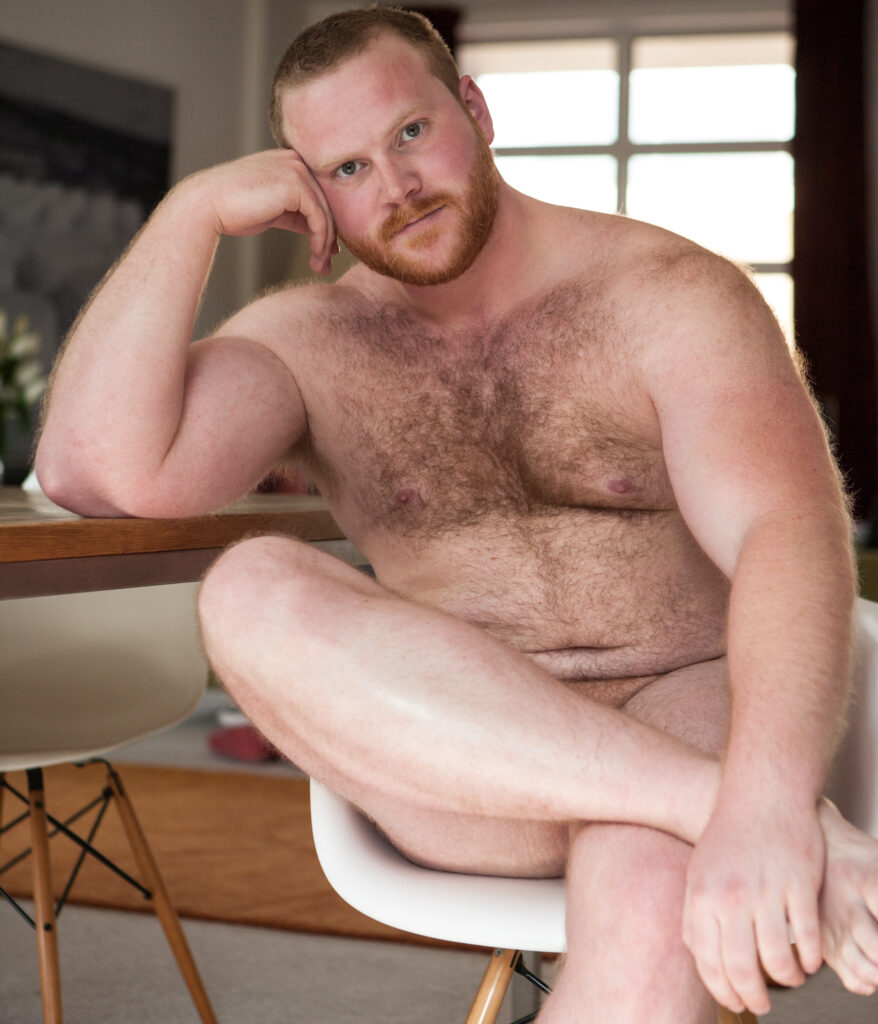
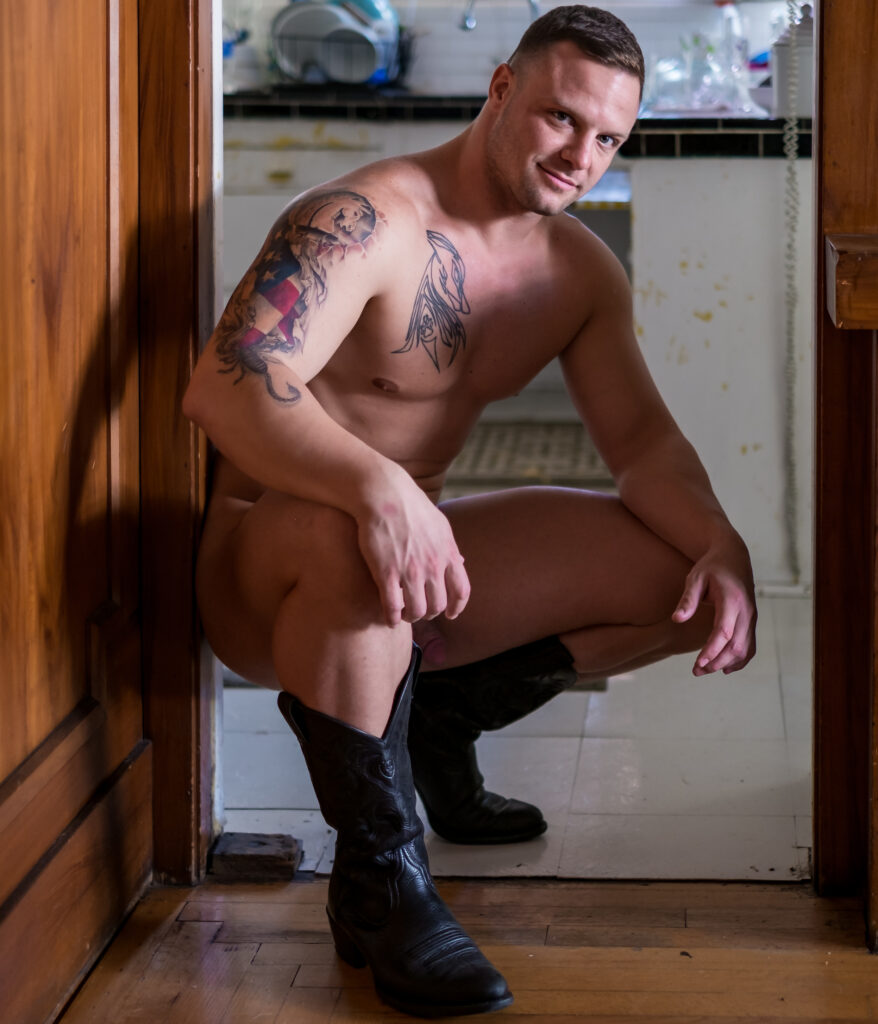
John Hernandez: And I couldn’t be happier to hear that! Where did you learn to be a photographer?
Vincent Keith: I learned it with my dad. My father is a very accomplished photographer in his own right, amateur, but really, really skilled. During my entire childhood, we always had a dark room with chemicals, the whole photography kit, enlargers, everything. And so, from a young age, I knew that if I wanted to spend more time with my dad over the weekends, when he was doing his photography, I had to take up an interest as well.
I had my first camera when I was eight and by the time I was nine I could load and develop film. Then I was a photographer for the high school yearbook, I took photos of friends, photos at Christmastime, that sort of thing. When I went to university, I basically stopped taking photos because I didn’t have time and the people at the art school were just so beyond my capacity at the time. But, I picked it up again when my first child was born. I said to myself, I want beautiful, magazine quality photos of my kids as they grow up, and so I went out and bought a fantastic camera and documented their childhood that way.
And then later on the male photography helped me as part of my coming out process and in understanding who I was, what I was attracted to. I started exploring myself through a lot of self-portraits and self-nudes and then ultimately by taking pictures of other people. It taught me a different kind of communication and it made me a whole lot of friends.
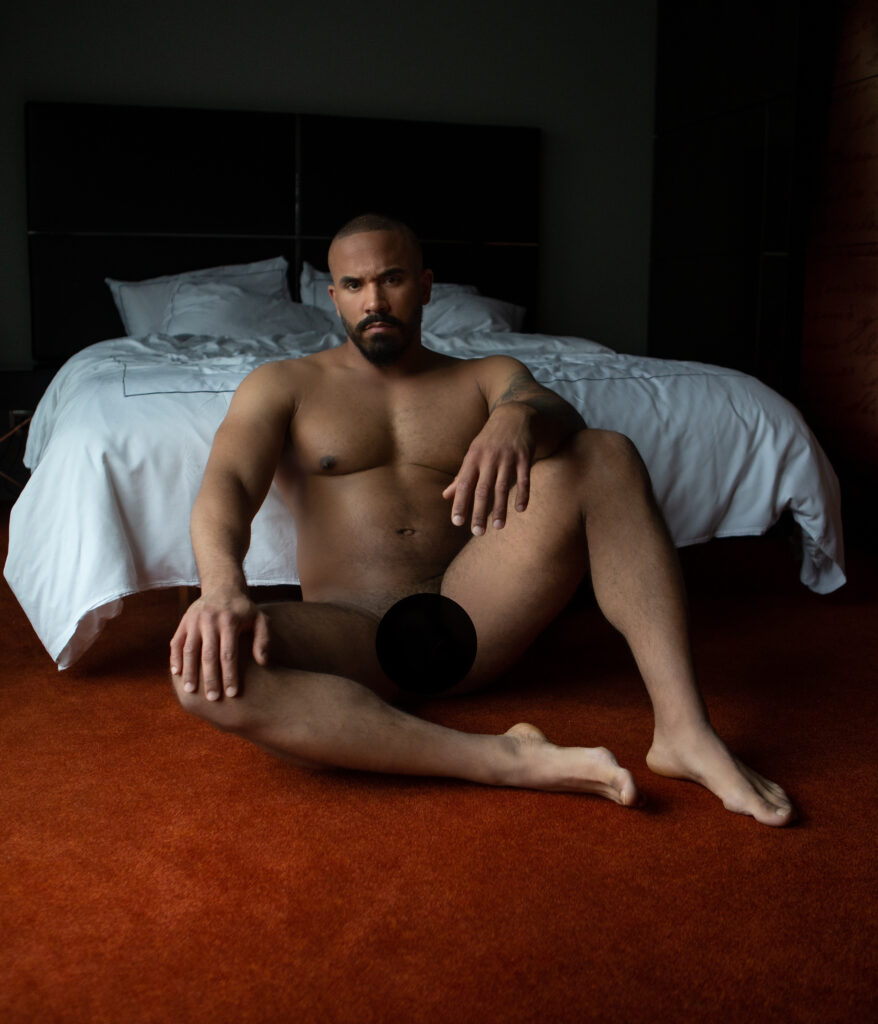
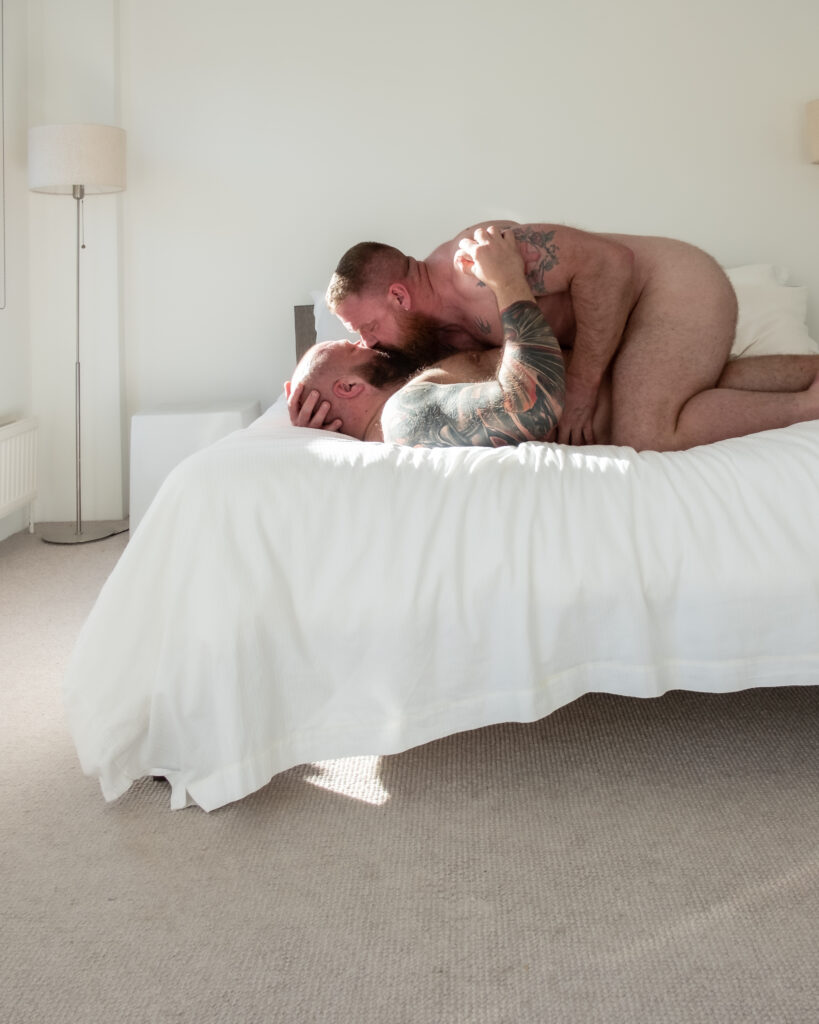

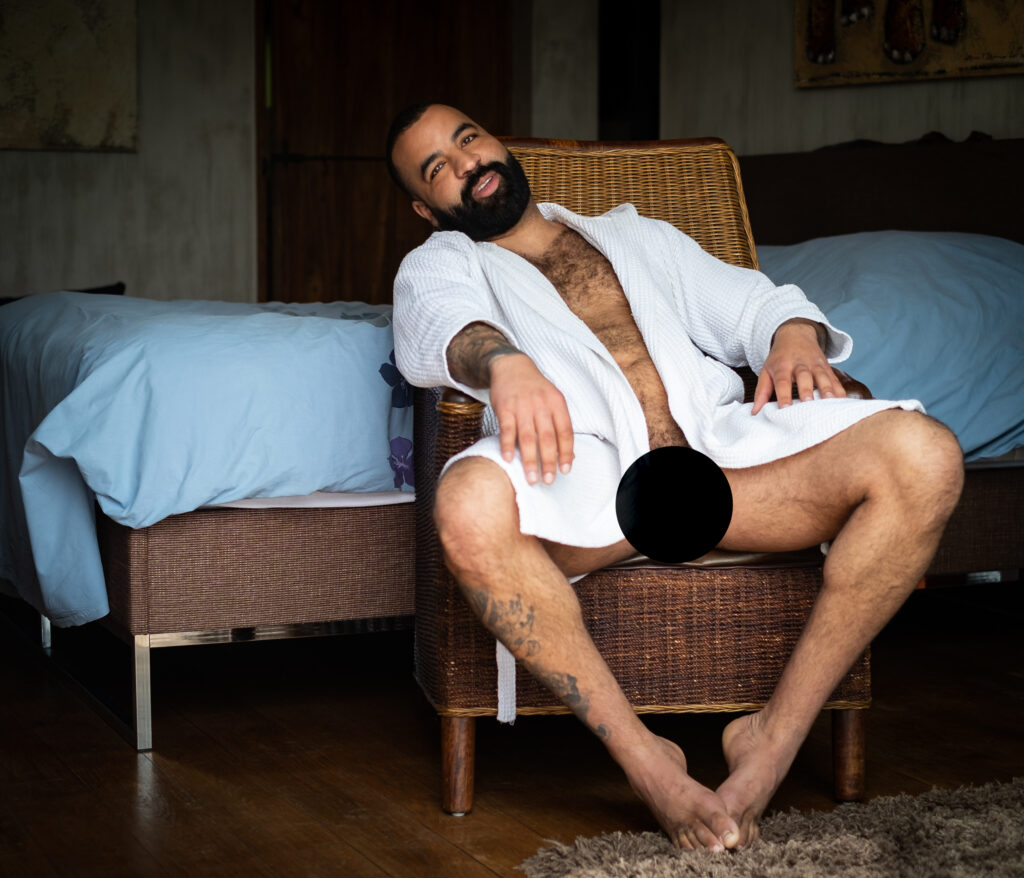
John Hernandez: Wow. I love that. Your art is rooted in love from the very beginning. What a nice throughline for your work. Speaking of which, how would you say your photography has evolved through the years?
Vincent Keith: That’s a very good question. In the beginning, there was a lot of exploration. I tried everything, some things worked, some things didn’t work. To begin with, it was so exciting to have a naked person in front of me (laughs) that I was kind of distracted. I only got half the pictures I wanted and half of them were out of focus! But as I matured, my skill levels improved. I started to really focus on character.
I’d say there are two different approaches to photography. One is: ‘I’m a photographer who has an idea of a photo in my head. And I’m going to create that photo, and I’m going to throw models into it to make that photo come to life.’ And there’s nothing wrong with that. It’s an amazing, creative format. Then there’s the other kind of photographer, that’s more in line with my style which is, “I’m going to show up with my camera, with no expectations or anticipations, and I’m going to photograph and capture what I see in front of me and try and bring out the character of that person.
Now, you know, obviously I have the lighting and I have all the equipment and you’ll see that a lot of my setup is the same across photo shoots, but the photos don’t all look the same. And the reason for that is because I’m photographing the character of the person. That’s what I’m trying to bring out in the photos.
So, my photography has evolved in that respect, specifically, being better able to capture a person’s character and to have them communicate to the observer through the pictures.
John Hernandez: And what has your experience been with the models?
Vincent Keith: Well, some models arrive and they’ve already got a hard-on. And I’m like, let’s slow this down! (Laughs) But on the other end of the spectrum, there are many men I’ve worked with that were terrified to be photographed and even contemplated ditching out on the photo shoot. Those usually end up being the most special.
I cannot tell you the number of times I’ve photographed a man who comes around and looks at a photo of themselves that I’ve just taken, and they start crying. It’s a cathartic experience for them because a lot of men, especially in the bear community, grow up with such a confused understanding of their self-worth and their beauty as a man. You know, I don’t have a perfect body or a 14-inch penis either, we’ve all got to get over that. I tell them ‘You are as beautiful as you are in that picture and there ain’t shit you can say about it.’
With a photograph there can be no rationalizations or avoidance or any kind. And so, they start to shake and cry and then there’s a big hug and all of the baggage they had about their self-worth and self-esteem in the way they looked starts to melt away when they can see that they are objectively beautiful. And then after the hug, it’s like ‘okay, now get back in front of the lights because I want to take some more pictures!’ (Laughs)
It’s a wonderful experience to share with somebody, and it’s been the root of a lot of friendships. Consequently, my shoots don’t necessarily have huge direction except that I want to start off with portraits then, you know, less and less clothing. Then in future shoots with the model we can explore other things as well, different settings, props, that sort of thing.
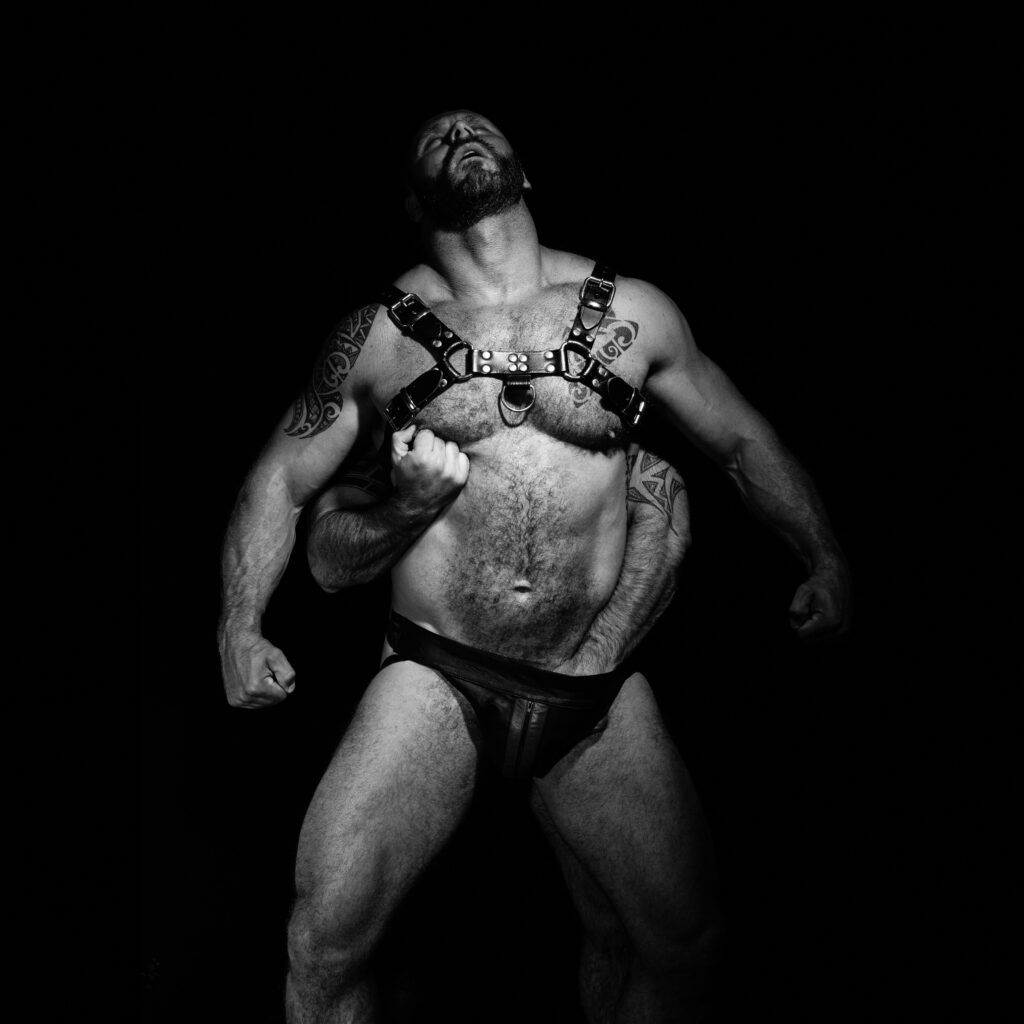

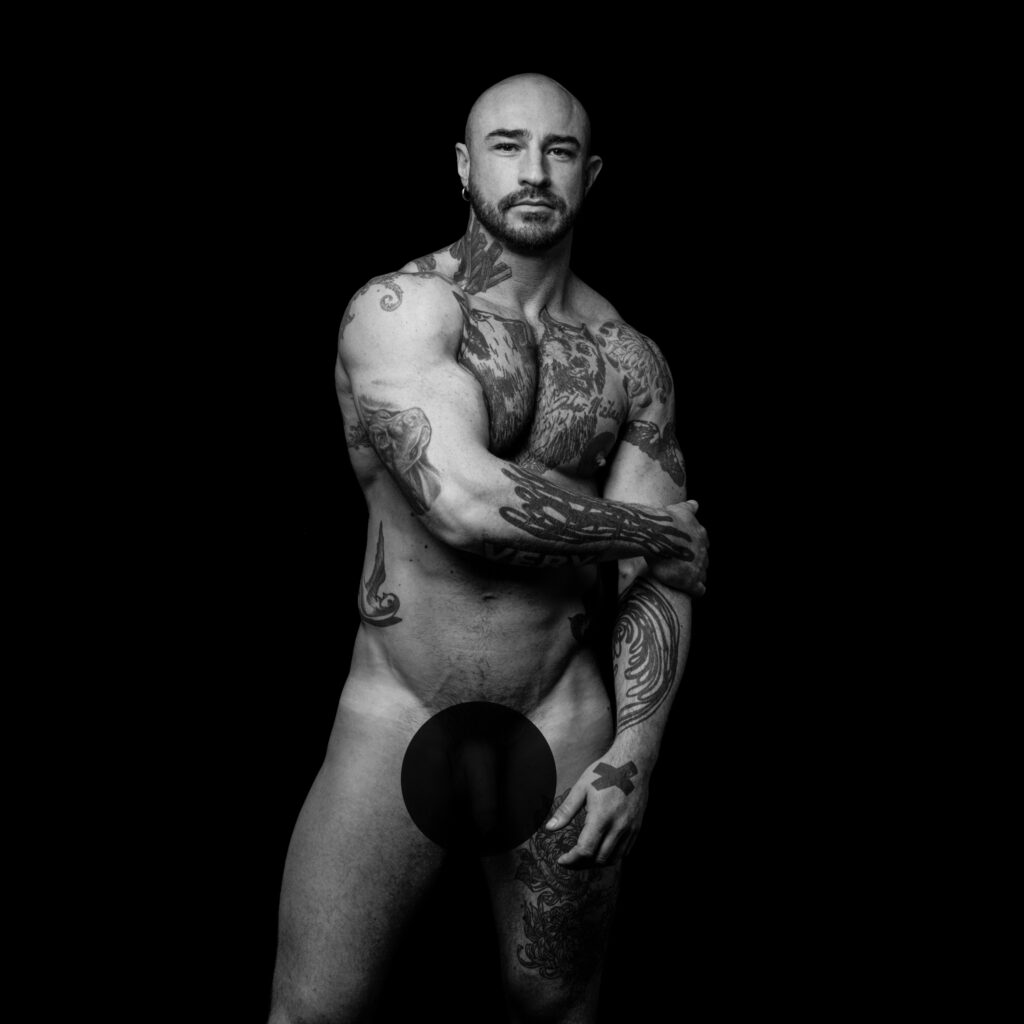
John Hernandez: I can imagine how healing that process must be for those men. How do you select the themes for each issue of MASCULAR and how do you narrow down what ultimately gets published?
Vincent Keith: For the themes, it’s random. It’s whatever catches my eye or we do issues on things that we feel need exploration on account of existing photography in the media, or lack thereof. Like the next issue will focus on hands and feet. There’s a big community of people out there who are into feet and they are underserved in the magazine space. I know this because if I post a picture that’s got feet in it, I get six times the number of likes! I’m like, where are all these people? You know? So, we decided to do an issue dedicated to feet (and hands) because that’s what people seem to want.
After the theme is picked, we put out the call for submissions from all around the world. In terms of how we select who gets featured, we’ve got a few artists who submit pretty regularly, and we try and recognize them because they’ve supported the magazine for a long time. And if I get a submission from anywhere in Africa or Iran or China or someplace like that, I try to showcase that work because the gay communities in those regions are extremely underserved in that we don’t hear from them enough, and they definitely have something to say and it’s definitely worth our hearing it.
We also always want to feature a good mix of professional and amateur photography. We don’t only want work from the highly successful and world-renowned people because they’re going to get their work out there and be visible regardless. We definitely make sure to include a lot of features in the magazine that showcase the work of artists who are less famous or who are just starting out in order to give them a boost of encouragement, as if to say ‘Yeah! This was good! keep at it!’
I think, generally speaking, the work we see in the magazine is of a very high standard, but we do strive to be as inclusive as possible.
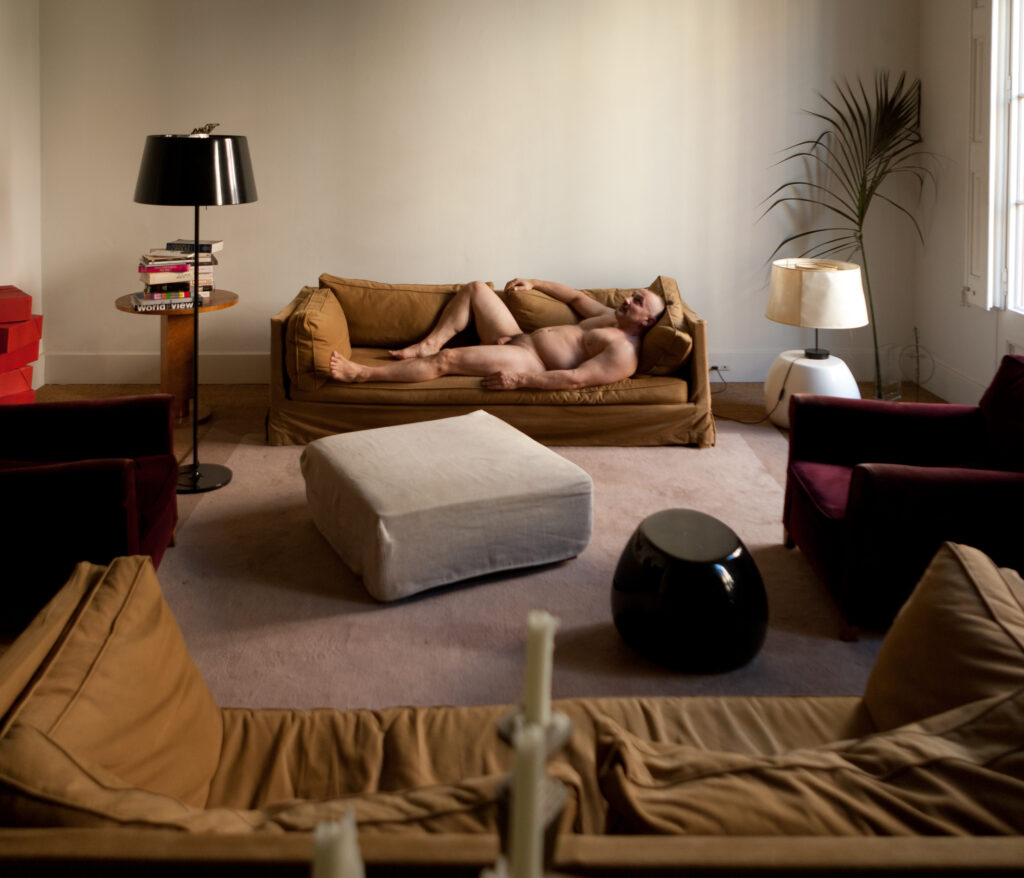

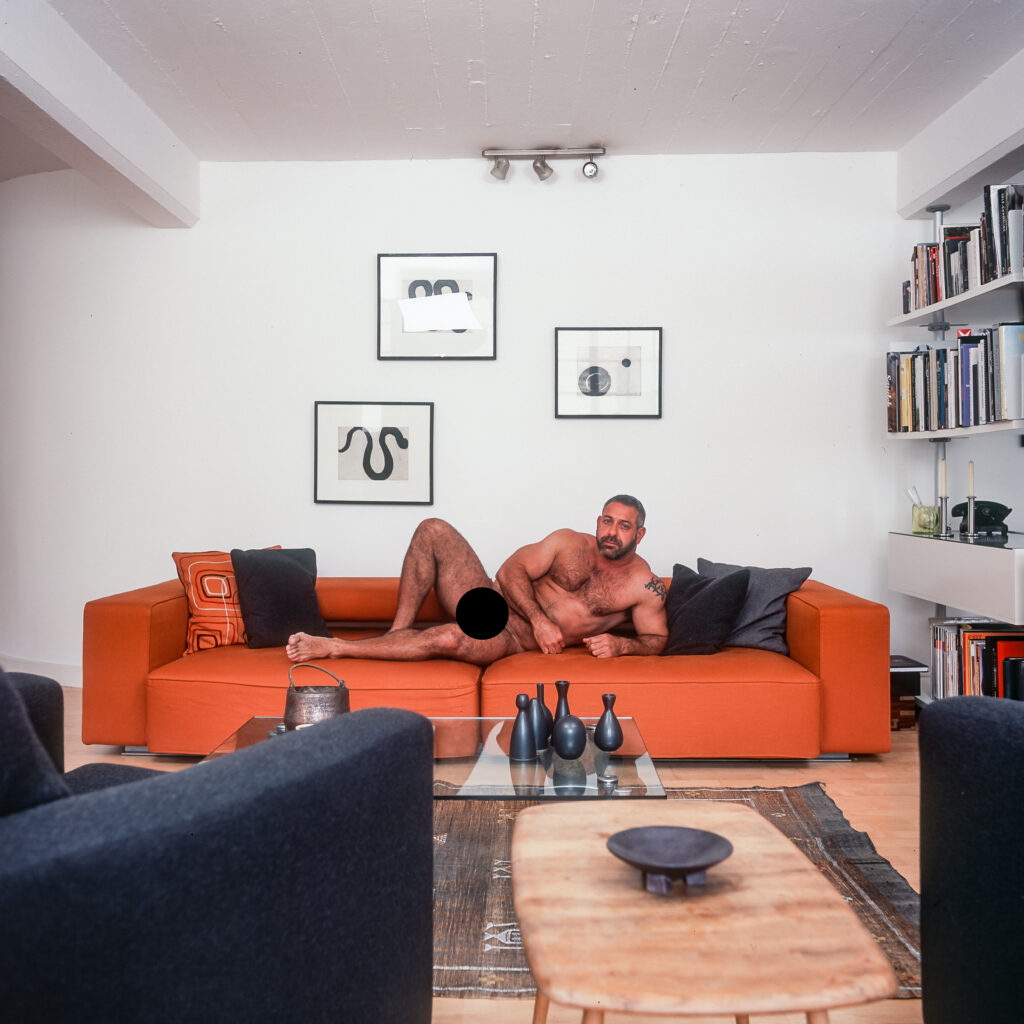
John Hernandez: Are there any plans for a printed version of the magazine or for a book of your collected work?
Vincent Keith: We get requests all the time for a printed version. And it’s just not possible. A printed version of each issue would cost something like $300 which is crazy!
And if we were to not charge that much then we’d have to fill the magazine with advertisements and based on our content, that would be a very restricted field of advertisers. I don’t think people want to be looking through art and then porn, and then art again. And it’s not that there’s anything wrong porn, it’s just that’s not the theme or the feel of the magazine. That’s not how we want it to look. So, we haven’t done a printed edition. Randy keeps kicking my ass on that too, so we might do something printed that is like a compendium in the future. Keep your eyes open for that!
I did recently publish a separate project in France though, my first French project, called Un Portrait d’Amour Dans Le Temps, or A Portrait of Love in Time through lulu. It’s a collaboration between myself, one of my closest friends Fabrice Fort, who is a poet, and a Belgian model named Julien van Aken. It’s a booklet and collection of fictional letters and poems chronicling a love affair between two men during World I. The photos are edited to look like old photos and the poetry is just breathtaking. Unfortunately, it cannot really be translated into English. The poetry works in French only. For instance, there is a poem where all the words have the same ending sound in French, so it definitely wouldn’t have the same impact in English.
I’ve also previously released a few books of my work through Blurb which are printed on demand.
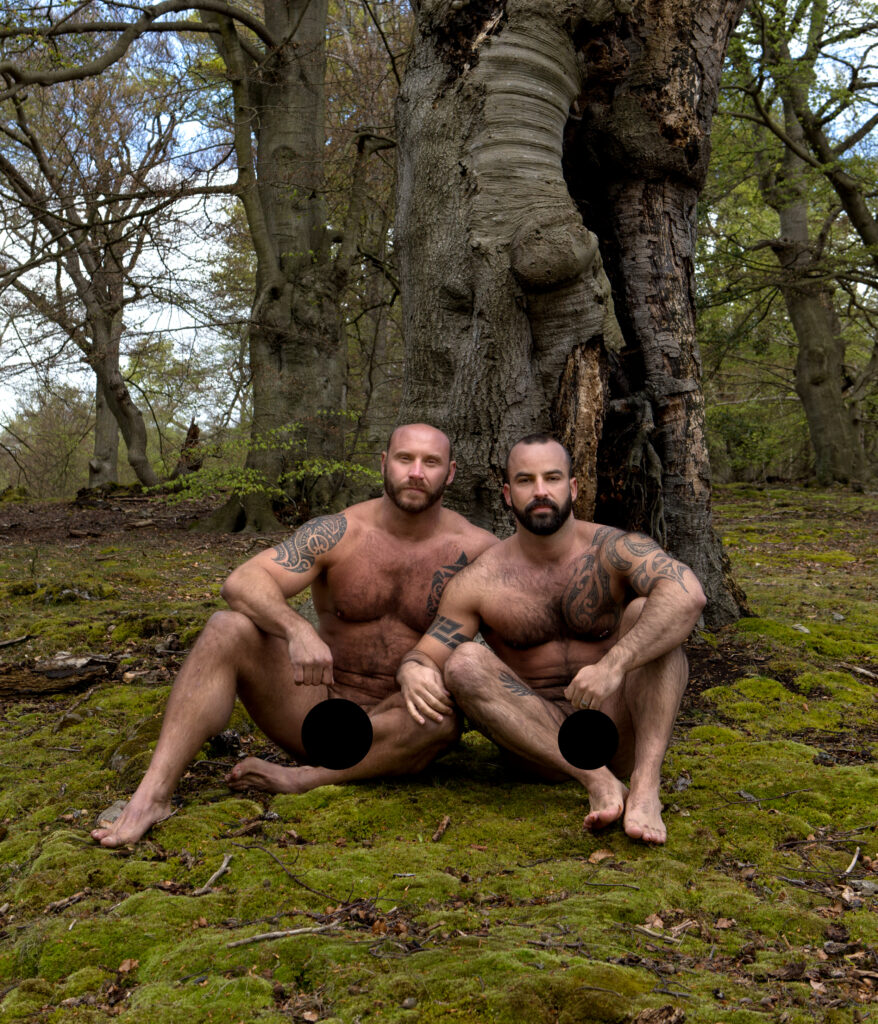
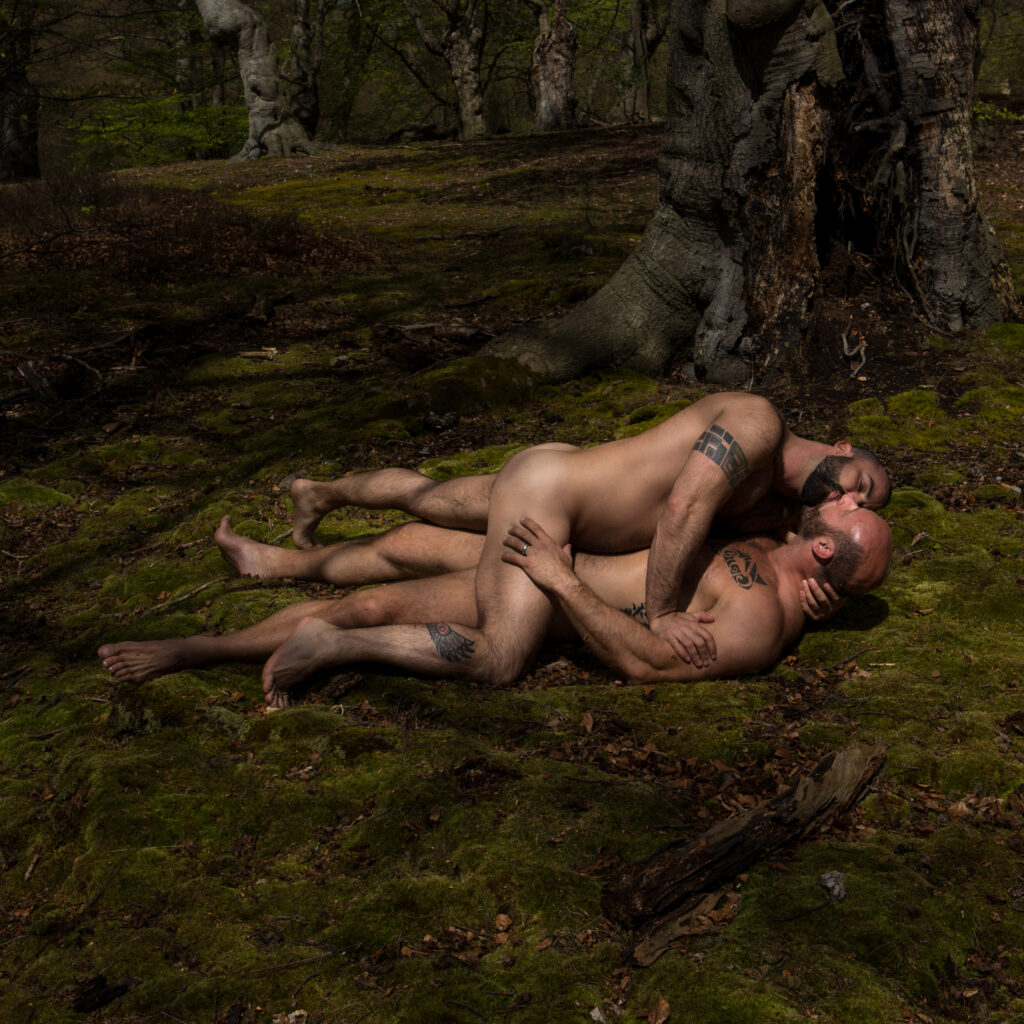

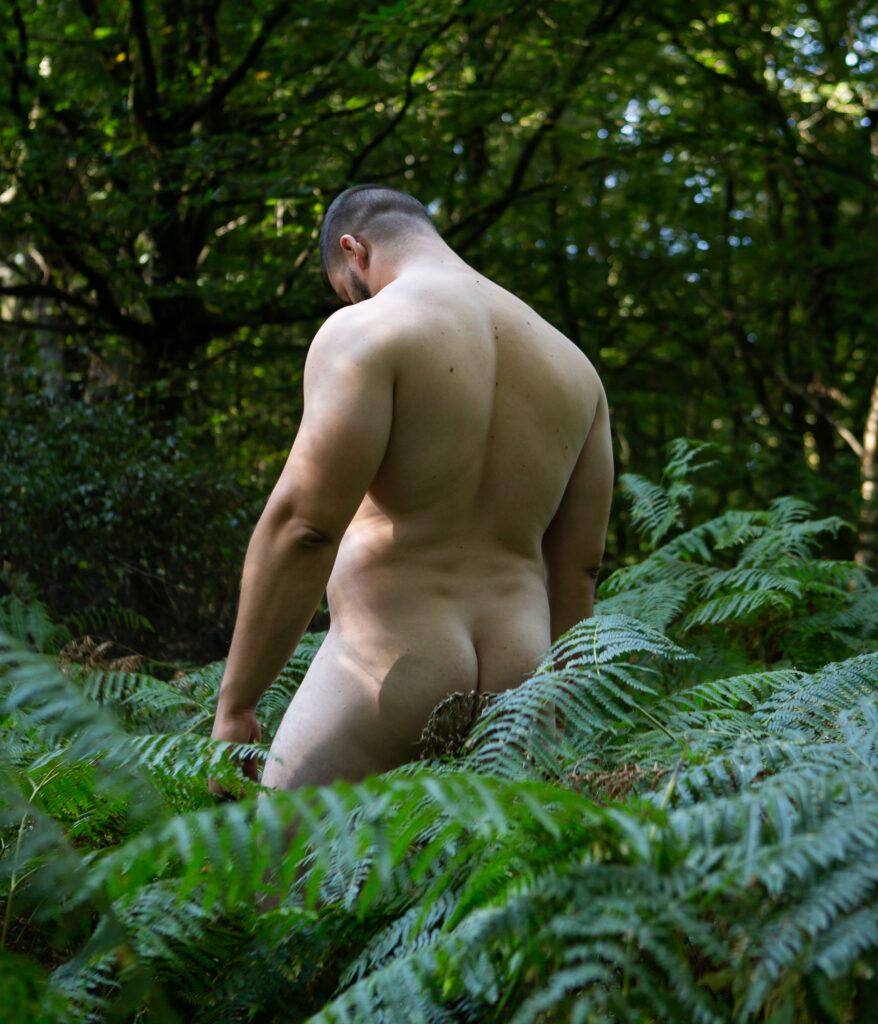
John Hernandez: I will definitely check those out, but I’m going to have to agree with Randy on the compendium. I for one am ready to place my preorder, like yesterday! (Laughs) I also know that there’s a MASCULAR OnlyFans. What’s that about?
Vincent Keith: Here’s the problem. It appears that Meta has been targeting gay artists and removing our content. MASCULAR at one point had 34,000 followers on Instagram, and then they cancelled my account.
The fact that these platforms are happy to share violence without any problem is insane to me. I get pictures of animal cruelty, I get pictures of Russian people driving trucks into houses and killing people, that’s all fine. But a man’s behind – Oh my God!! There’s so much wrong in this that I can’t even begin to begin to unwrap it.
There is really nowhere nowadays to see or to publish nude work. Every time I publish something – in the back of my mind, I’m not thinking ‘I’m proud of my work, and I want to share this with a broader community of men who appreciate my work.’ It’s more like ‘Will this get caught by some censor for Meta or whatever?’
So, the only place I can publish nudes is Twitter and Twitter is the worst platform for trying to share work. It’s just not meant for sharing art. It’s meant to be a scrolling news service. Let’s say you’ve done five images in a series of somebody in an apple orchard, and you know, you get one picture out and then Twitter can auto populate someone’s newsfeed with virtually anything and so the series of images gets dispersed among a lot of unrelated content.
OnlyFans allows the work to be presented in one place, in the order in which it was intended. It’s there because there are some people who want to see more of the work and that platform makes it possible.
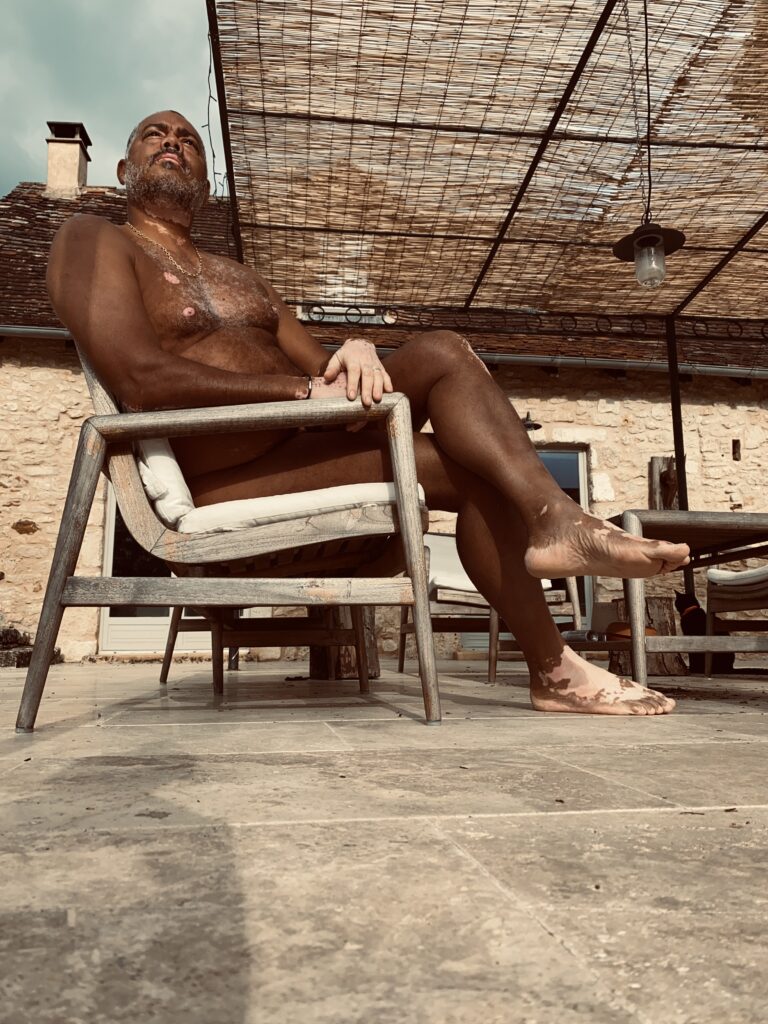
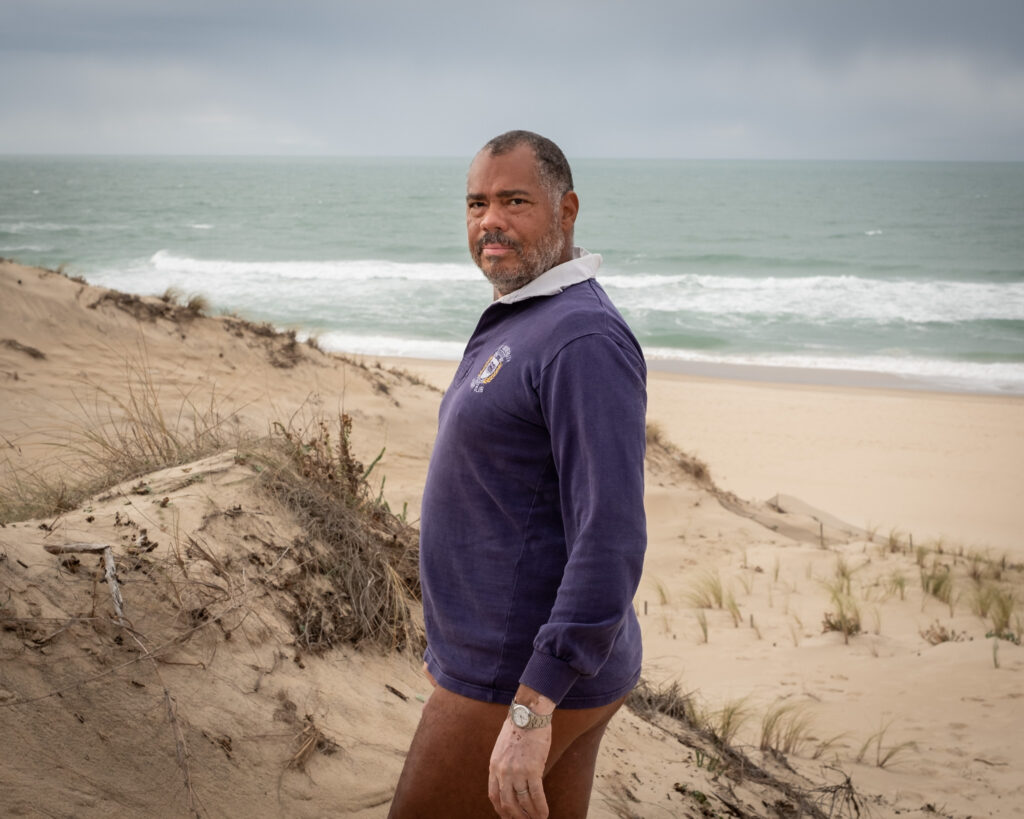
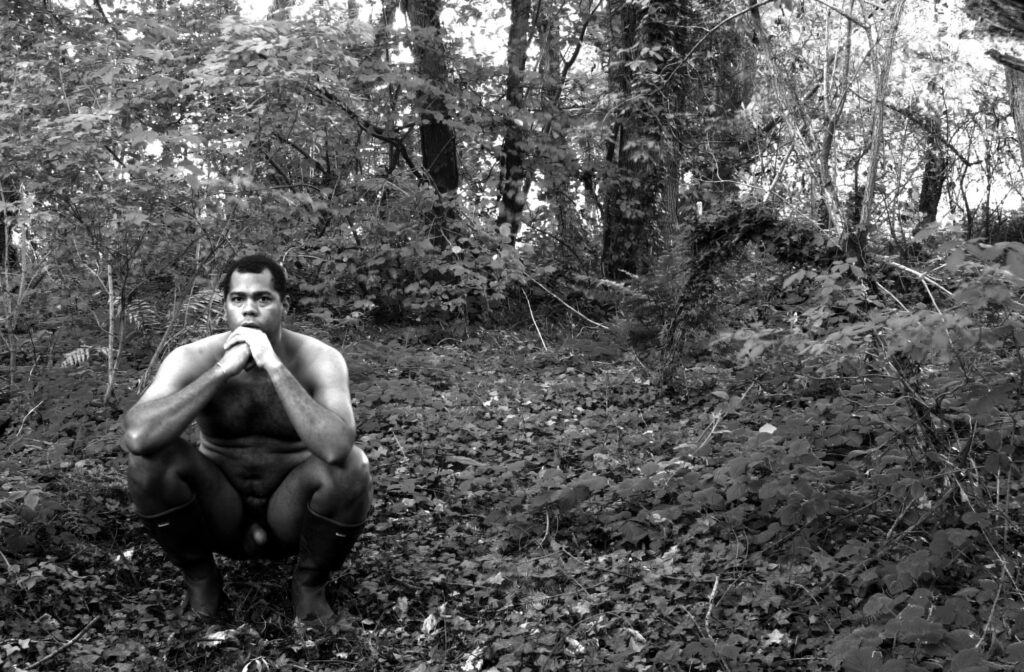
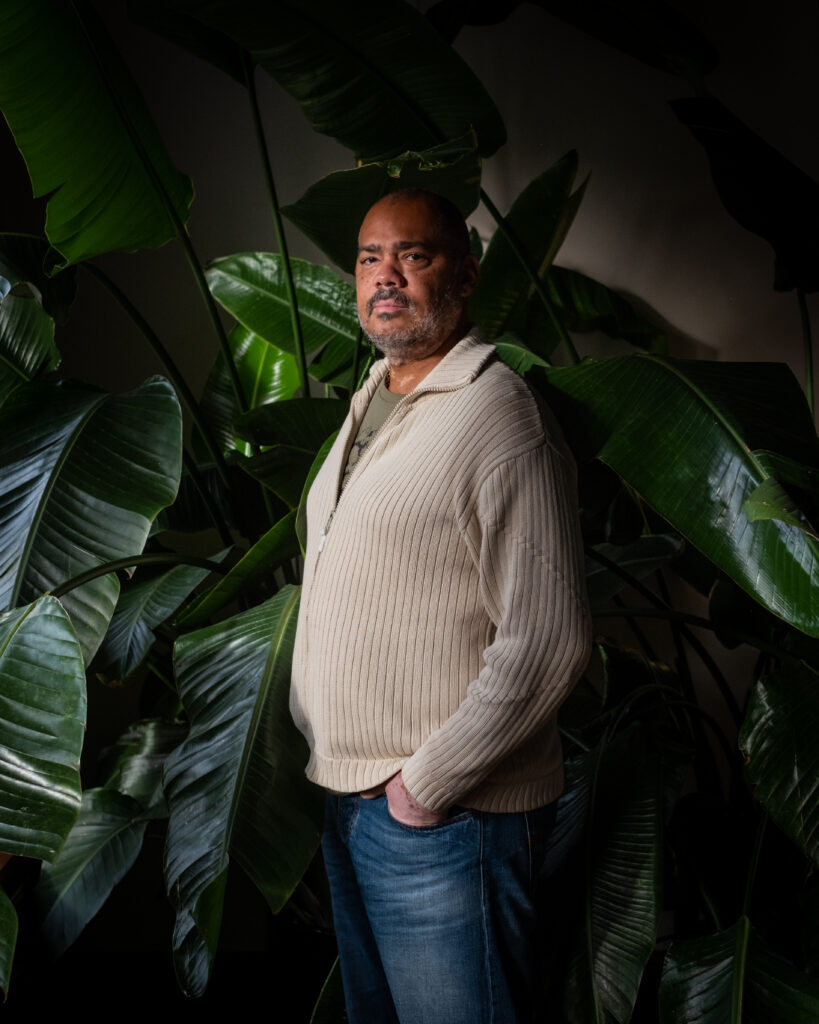
John Hernandez: l completely understand that and your work certainly speaks for itself.
You clearly love men, your photography leaves no doubt about that. What is it about the male form and bears, in particular, that stoke your passion?
Vincent Keith: For me, it’s about masculinity. It’s beards, it’s hairy knuckles, big hands. It’s thick necks, deep voices and all those sorts of things that I respond to sexually and emotionally. They’re just the things that resonate with me.
I remember as a kid we were in Istanbul, Turkey, and my sister and I were with the couple who took care of us – the housekeeper and her husband – and we were walking through a market. And the market was very busy. I mean millions of people from my vantage point, and I had the strong sense that if I let go of the man’s hand I was done for. So, holding this man’s hand, this was my world – and he happened to have these big gnarly hands with hair on every knuckle! I can still smell that hand. I can still feel the roughness of that hand. I don’t know what it is with that hand but it still exists in my mind and my psyche. It represented a kind of security but also strength and triggered lots of different emotions in my mind. That memory has always stayed with me, and I guess explains why I am attracted to things that are the outward manifestations of masculinity.
John Hernandez: Beautifully said. I get that completely. Thank you so much for your time and for sharing your work and the work of so many other brilliant artists with the world. Your contribution to gay and bear culture is priceless. I can’t wait to see what’s next!
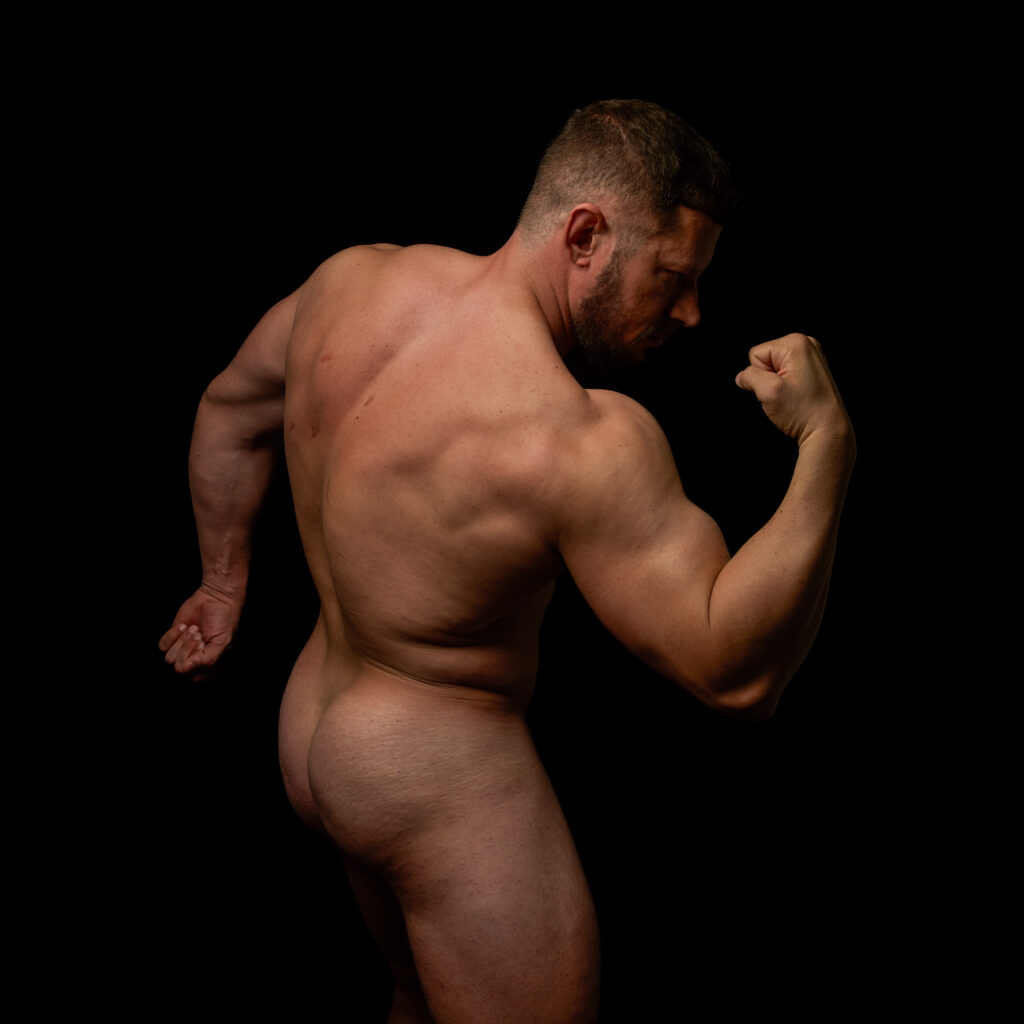

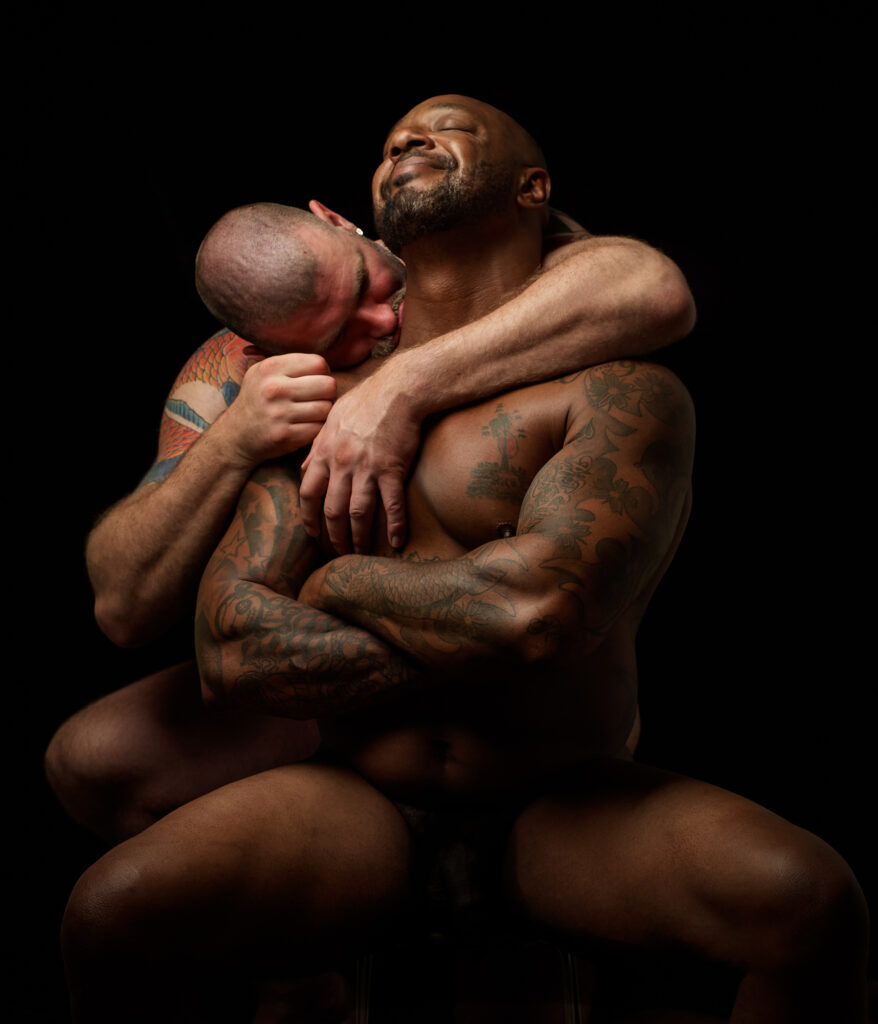
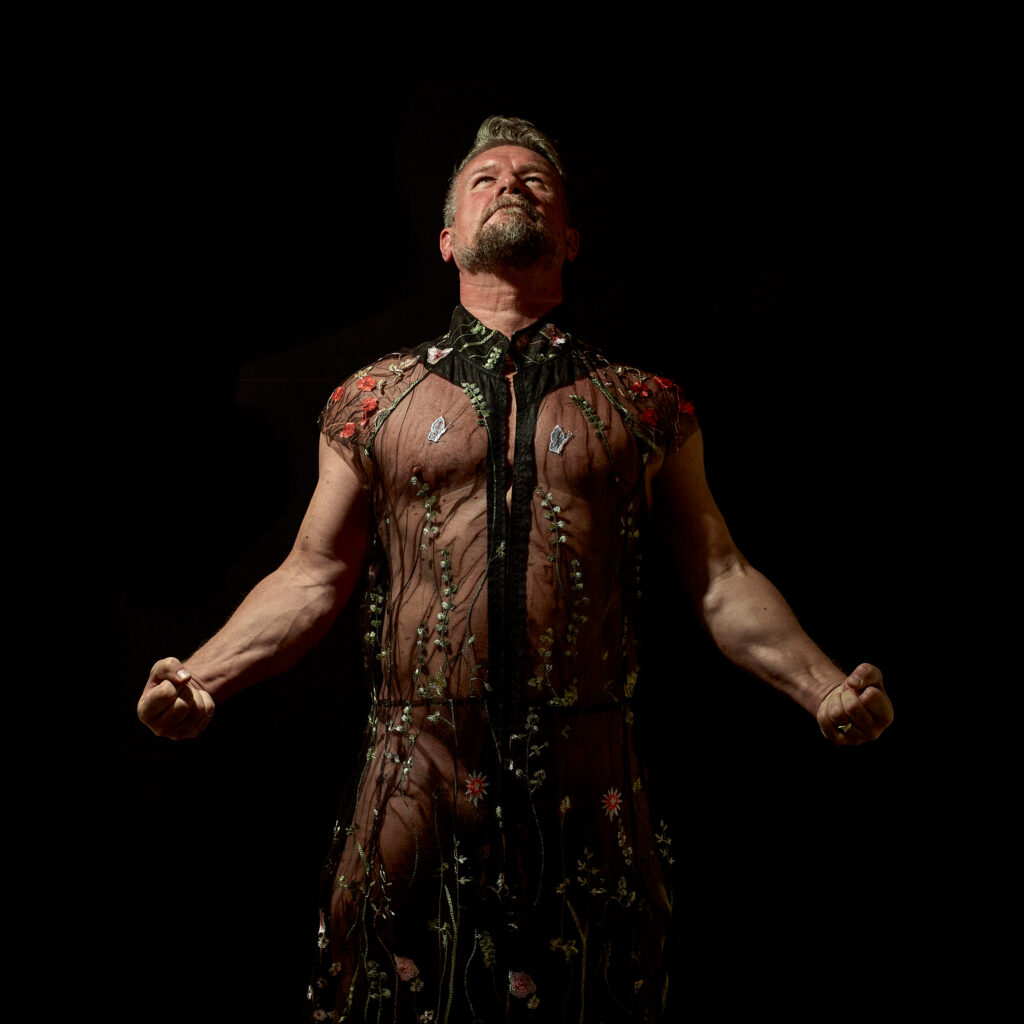

See more of Vincent’s Keith work on the MASCULAR Studio site here.
Take a look at the latest issue of MASCULAR Magazine here.
Check out the MASCULAR OnlyFans page here.
Purchase books from Vincent Keith on Blurb and lulu.
Get your MASCULAR merch on Redbubble.
